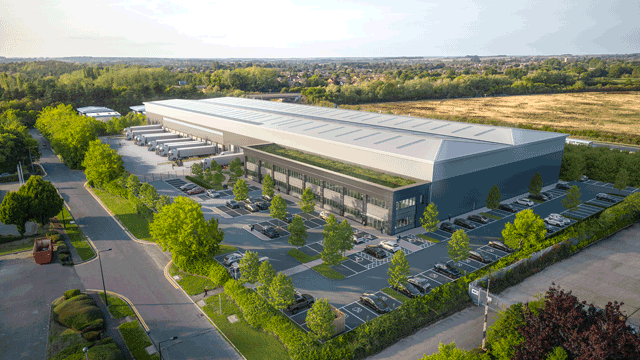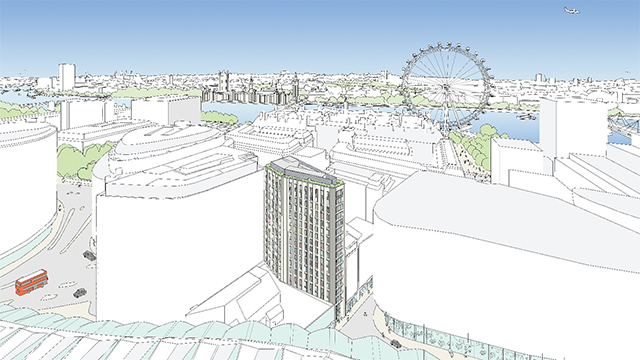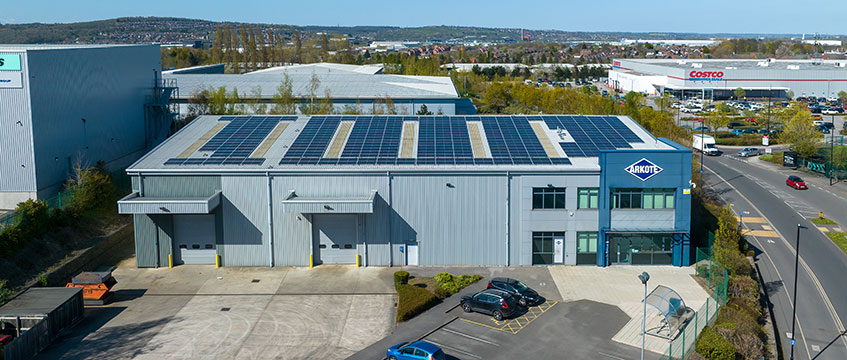The UK’s build-to-rent sector is poised to attract £6bn in investment this year, surging in the face of economic and geopolitical headwinds and reflecting the sector’s growing resilience, diversification and appeal to institutional investors.
The number of operational BTR homes has more than doubled in the past four years, according to Lambert Smith Hampton, surpassing 130,000 in the first quarter of 2025. The pipeline remains robust, with more than 56,500 homes currently under construction and a further 126,000 in planning.
The UK’s BTR sector spans multi-family developments, single-family rentals and an emerging co-living segment. These sub-sectors are helping the market mature and better meet the evolving needs of renters across the UK.
SFR has been a significant driver of investment activity in the past two years. Institutional investors have expanded their portfolios, and housebuilders increasingly incorporate SFR deals into their business plans. SFR now comprises about 10% of total BTR stock, with expectations for further growth.
Meanwhile, co-living now accounts for 15% of the development pipeline, up from just 6% of existing stock, and is gaining ground in regional cities such as Manchester, Leeds and Birmingham. The pipeline has become more geographically diverse, with 58% of homes under construction now located outside the traditional strongholds of London and Greater Manchester.
Strong start
BTR investment reached £5.2bn in 2024, according to LSH, and its momentum has continued into 2025, with £1.1bn transacted over the start of the year. However, a notable shift occurred in the first quarter, with multi-family assets dominating activity while SFR transactions eased.
The multi-family segment accounted for more than 80% of Q1 volume, buoyed by several large forward-funding transactions such as Barings’ £152m deal with Glenbrook in Leeds and Goodstone Living’s £116m deal with The Hill Group and Peabody in London.
Stabilised multi-family assets also saw a surge in trading. Ridgeback acquired Equipment Works in Walthamstow for £126m, Quadreal and Realstar bought Allegro in Birmingham for around £115m, and KKR purchased The Slate Yard in Salford for more than £100m. These deals helped stabilised assets account for 48% of multi-family investment in Q1, up from 27% in 2024 and significantly above the previous five-year average of 15%.
LSH said the rise in stabilised transactions signals a maturing market, as more owners reach the exit points of their investment strategies. Another shift is the growing presence of forward purchases, particularly in the SFR segment. In 2024, forward purchases overtook forward-funding deals for the first time – a trend driven partly by North American investor preferences.
Birmingham leads the charge
While London and Manchester continue to dominate, accounting for 66% of completed stock, their share is slowly declining. Birmingham has emerged as the UK’s fastest-growing regional market, with more than 16,000 homes either under construction or with planning consent.
Key schemes include Cortland Broad Street, comprising 440 homes, and phase one of Moda’s Loudon’s Yard, which has 398 homes.
Other urban centres such as Leeds, Sheffield and Glasgow are also seeing brisk development activity, supported by the expanding SFR segment, which is helping extend BTR’s reach into suburban areas.
Rental growth slowed in 2024 after a record-breaking 2023 but is forecast to rebound in 2025, with a projected 4.5% rise in rents by December. SFR continues to outperform, with 2024 rents up by 4.8%, compared with a 2% rise across the broader market. This resilience comes amid declining rental supply, with 2024 availability 40% below 2016 levels.
Tenants are now paying an average of £4,200 more annually than in 2019. However, with average wages up by 30% in that period, affordability has not yet reached a critical threshold.
LSH said BTR rents have risen by 33% in the past five years, only slightly trailing the 35% rise in non-BTR homes. However, it found that this is not due to oversupply, but the natural life cycle of BTR assets transitioning from new-builds to mature stock. The long-term challenge will be maintaining standards through refurbishments. Unlike private landlords, BTR operators have full control of buildings and units, allowing them to protect value and service levels.
Upcoming regulation could further reshape the market. The Renters’ Rights Bill – expected to become law by summer 2025 – will abolish section 21 evictions, phase out fixed-term tenancies and introduce tighter rent controls. LSH anticipates longer tenancies, more cautious landlords and further rent pressure. The agency said while tenants may benefit from increased security, those on lower incomes could find it harder to access rental housing.
New schemes, stronger rents
LSH found that, contrary to expectations, the launch of a new BTR development in a neighbourhood tends to boost rental growth at existing schemes. In the first three years, older developments often see faster rental increases than both new launches and nearby non-BTR properties. Marketing around new schemes appears to enhance the profile of neighbouring assets, while renters often see better value in more established buildings.
This rental convergence usually levels out after three years, with BTR schemes then tracking local market trends. Though premiums over private rental sector homes peak when units are brand new, they remain steady over time, supported by strong management and consistent standards.
With 4.65m households renting privately in England, 19% of all homes, PRS remains essential. However, its growth has stalled since 2016/17, with a net loss of 309,000 rental homes as smaller landlords exit the market due to tax and regulatory pressures.
While BTR has helped fill the gap, with more than 14,000 BTR homes advertised to rent in 2024, up threefold from 2016, they still represent only 2% of all listings.
LSH said “a huge wall of money has built up over recent years ready to be invested into UK BTR”.
Interest rate cuts and lower build cost inflation helped to release more of this pent-up capital over the past year but the rapid escalation of global trade tensions has the potential to inject a new dose of caution into the market.
The agency said it is too early to discern any specific impact on BTR investment stemming from recent global developments, but a possible US or worldwide recession could affect the investment plans of overseas investors.
Conversely, expectations for interest rate cuts have risen significantly in response to recent events, which may aid the funding of deals. At the time of writing, financial market pricing implied the Bank of England base rate will reach 3.50-3.75% by the year-end.
LSH said: “BTR is now ‘built to last’. No longer an upstart, it has become a cornerstone of UK housing delivery, offering stable investment opportunities and a solution to structural challenges in the rental market.”
Image © Adobe Stock
Send feedback to Akanksha Soni
Follow Estates Gazette











